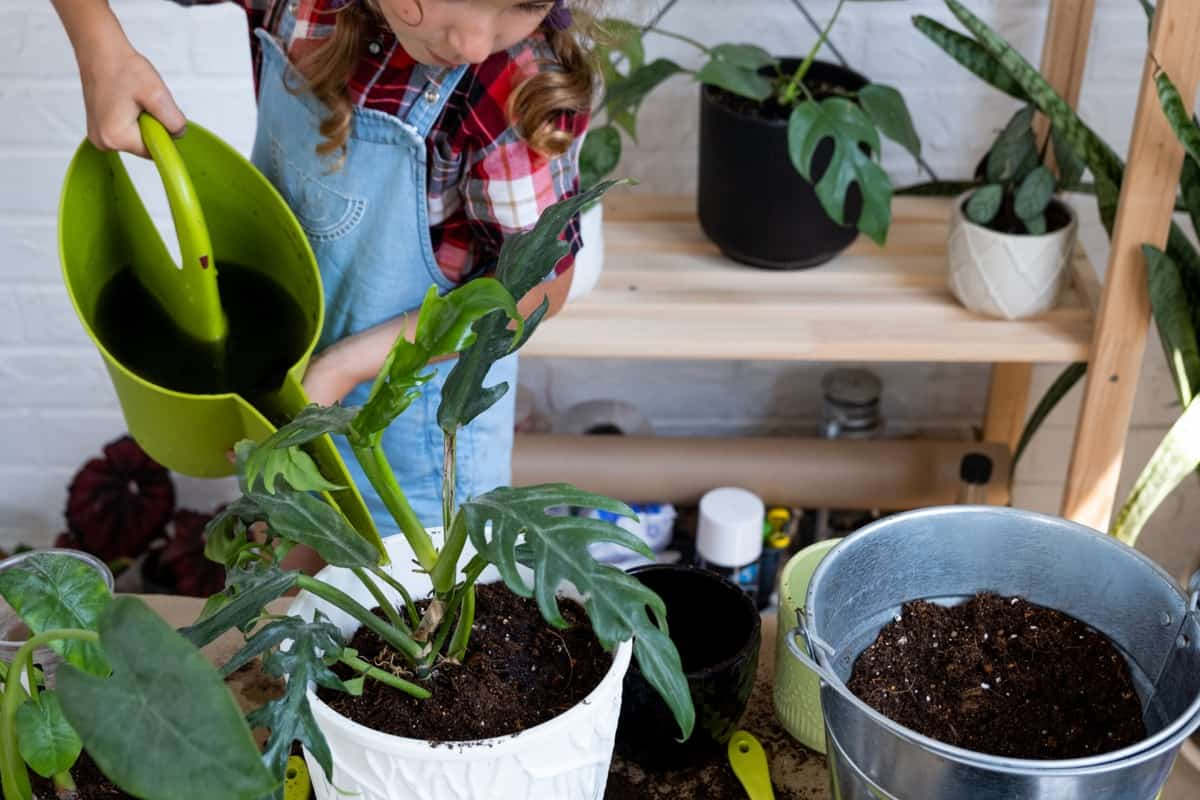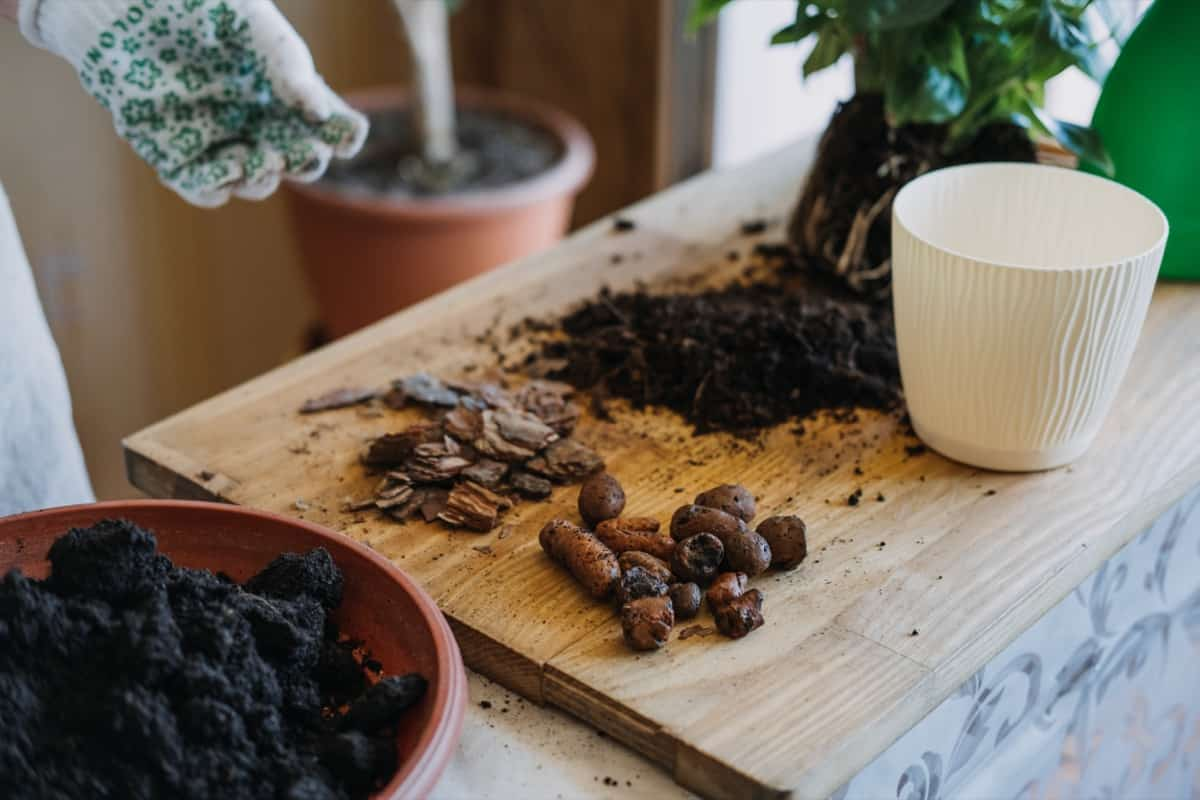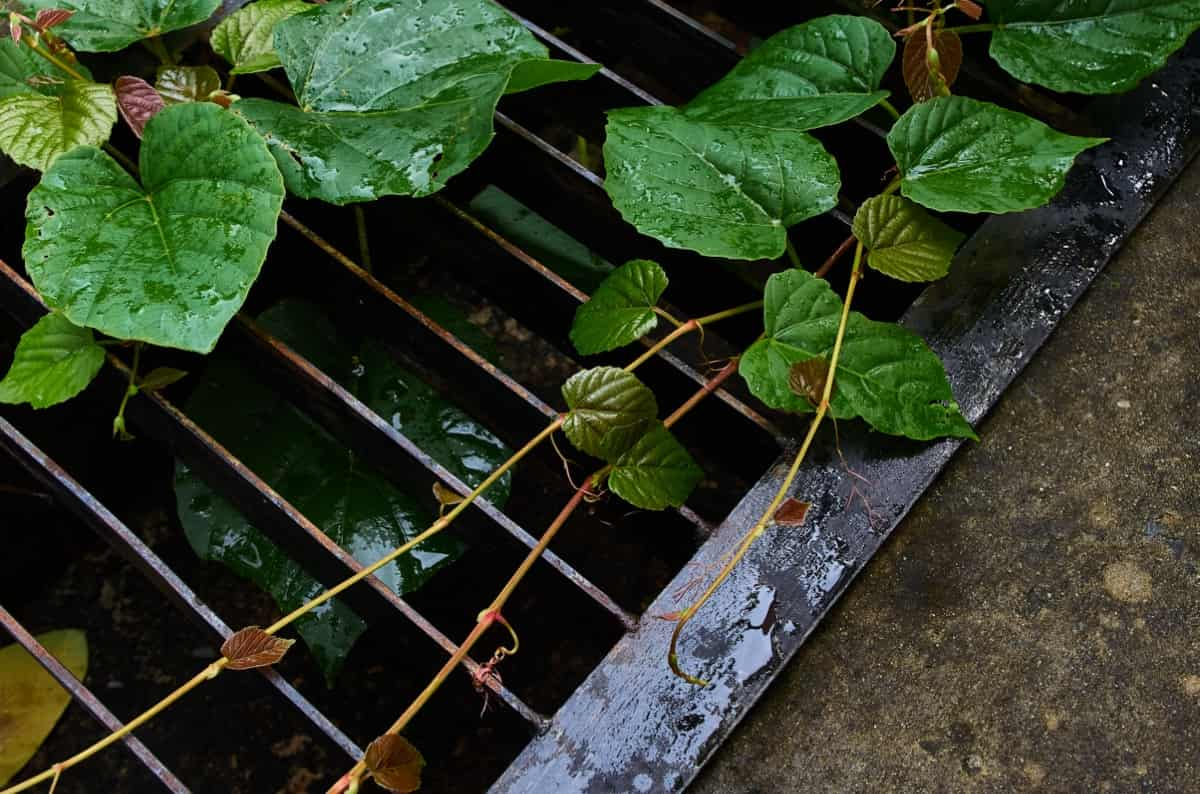Plant root health depends on proper drainage since water shouldn’t pool at the base of your plants after watering if excess water is allowed to drain out. Doing so protects the plant’s root system from bacteria, fungi, and rot. The effects of overwatering can be severe. Oversaturated soil or standing water at the bottom of your plants can drown them. For this reason, you should always ensure that your garden has proper drainage.

How to Plan a Drainage System in Gardening
Types of Drainage Systems that Best Suits for Gardening
Whenever digging work is done, always think about where the water must go first. In other words, you need to locate a ditch, stream, or soakaway near your garden so you can redirect surplus garden water there. It should also be noted that drainage work is usually done between late summer and early winter when the soil is usually dry.
Simple Ditches
Dig the ditches (about 90cm deep) on a slope using pedestrian-operated trenching equipment. It is important to note that ditches should have sloping sides and be dug at the bottom of the slope. Despite its simplicity, this drainage system works well and diverts extra surface water from your garden.
French Ditches
Sloped ditches are ideal for redirecting stagnant water to drains. A trench of this type usually measures 15 cm in width and 30 cm in depth. Create one for your garden by following these steps:
- A horizontal trench should be dug along the slope length towards the drain.
- Maintain the slope of the trench continuously by using a string and string level.
- The trench should be lined with landscape fabric before adding gravel to improve water percolation.
- The trenches should be filled with gravel at the bottom and then folded with fabric.
- Pour gravel over the fabric and spread it evenly to maintain the slope.
- Cover the ditch with topsoil evenly distributed along its entire length.
Herringbone Drainage
A herringbone drainage system is built on a slope like a French ditch. In contrast to the French ditch, it consists of several trenches connected to the main drain, which is why it is called the herringbone pattern. When dealing with irregularly shaped lawns or gardens that have been flooded, this technique is best suited. The following steps will help you install successful herringbone drainage:
- Mark the location of the main trench. You should begin at the highest point of your lawn or garden and work your way down.
- To form a herringbone pattern, mark the position of the side trenches at a 45-degree angle to the main drain.
- The side drains should be spaced out either at 3-meter intervals (for clay soil) or 7.6-meter intervals (for loamy soil);
- Using landscape fabric will improve water percolation in trenches.
- Place gravel in the trenches and fold the fabric over it with a shovel.
- Dig a 1.2-meter-deep soakaway (a pit filled with hardcore where water slowly soaks into the soil) at the lowest end of the main trench.
- Connect the main drain to the soakaway hole’s center.
Piped Drainage
This method also involves digging sloped trenches, lining them with landscape fabric, and filling them with gravel and topsoil. However, you will also have to purchase and install perforated plastic or corrugated land drain pipes inside ditches. This method is probably not good if you only have one puddle after a rainfall. You should consider perforated drainage if your soil is uneven and you have several spots.
In case you missed it: Backyard Vegetable Garden Layouts: A Beginners Guide

The perforated pipes allow water to enter from every angle, not just the lowest part of your garden. This will make it easier to distribute. It is important to remember that the holes must point downward. Otherwise, the water would have to fill the whole ditch before reaching the holes. Piped drainage systems are a monumental task that certified landscapers should only handle.
Some Alternative Ways to Increase Drainage in Garden
Waterlogged gardens are not ideal for maintaining a lush, green lawn due to poor drainage when spring comes. You can improve your garden’s drainage by following these tips.
Pricking, Slitting, or Spiking
A shallow pricking or slitting of the lawn surface can help drain the garden, but deeper spiking is even better, especially with a tool designed to leave deep holes. Fill these holes with a free-draining material, such as horticultural sand or proprietary lawn top dressing, to allow water to flow from the surface to deeper layers.
Grow More Plants
Growing more plants is one of the easiest and best ways to improve drainage in your garden. Furthermore, it’s a relatively inexpensive solution that will make your garden look nicer for a long time. In any case, it is important to select plants that can survive wet conditions – unfortunately, many plants dislike too much water and cannot tolerate waterlogging.
Build Raised Beds
Plants need good quality, free-draining topsoil in raised beds to avoid boggy soil below. Brickwork or timber railway sleepers can be used to construct these structures.
Improve Soil Drainage
It may be possible to alleviate drainage issues by improving the permeability of the soil in your beds if the problem isn’t too severe. The best way to achieve this is to dig the soil deep, as organic matter allows excess water to drain while absorbing essential moisture. Making compost and using it to improve the soil is cheap but effective. In contrast, if your soil is sticky and clay-like, coarse grit sand will help it drain better.
Manage Surface Water
A great way to improve drainage is to manage surface water run-off effectively and efficiently. It is just a matter of incorporating sloping surfaces within your garden to direct excess water towards a drainage area or a plant bed containing moisture-loving plants where it can be disposed of. Sculpting the contours of your garden would require you to hire a mini excavator, which could be cost-prohibitive. In any case, seek professional advice.
Use Bark Chippings
It is great for absorbing moisture and improving drainage when using bark chippings. In addition, chippings are great at retaining moisture, preventing weed growth, keeping beds warm during cold snaps, and improving the aesthetics of any bed to which they are added.
In case you missed it: 9 Sustainable Gardening Ideas: At Home for Beginners

Conclusion
Good drainage may not be as visible or beautiful as garden pathways or blooming trees, but it is just as important for an attractive and functional landscape. Without proper drainage, all the money spent on beautifying the landscape could be wasted if it is eroded or drowned. Drainage prevents all these dangers and ensures its health and longevity. Keeping your landscaping looking beautiful for years to come requires effective drainage.
- Feed Your Flock for Less: Top 10 Tips to Save on Chicken Feed
- Ultimate Guide to Ossabaw Island Hog: Breeding, Raising, Diet, and Care
- Hatching Answers: The Top 10 Reasons Your Chickens Aren’t Laying Eggs
- Eggs and Economics: Breaking Down the Cost of Raising Backyard Chickens
- Defend Your Greens: Proven Methods to Keep Iguanas Out of Your Garden
- Ultimate Guide to Cinnamon Queen Chicken: A Comprehensive Guide for Beginners
- Ultimate Guide to California Tan Chicken: Breeding, Raising, Diet, Egg-Production and Care
- Ultimate Guide to Marsh Daisy Chicken: Breeding, Raising, Diet, and Care
- 10 Types of Chicken Farming Businesses You Can Start for Profits